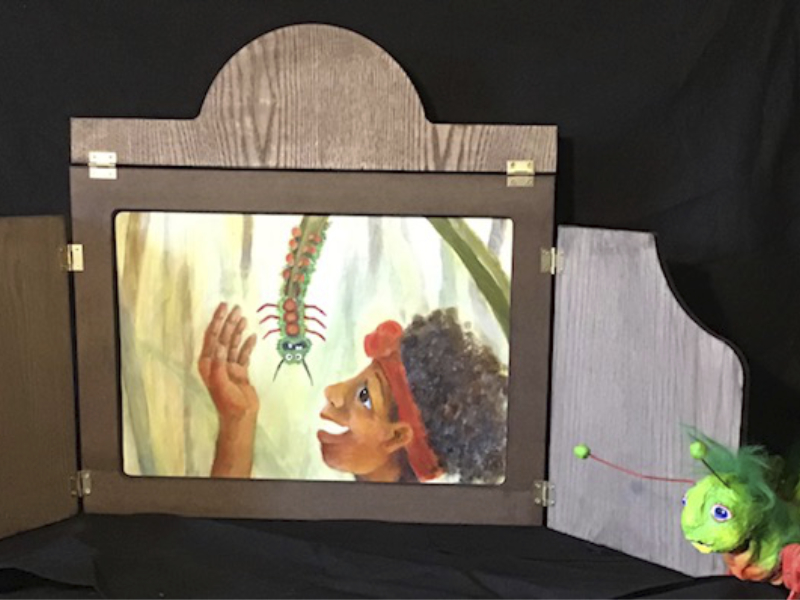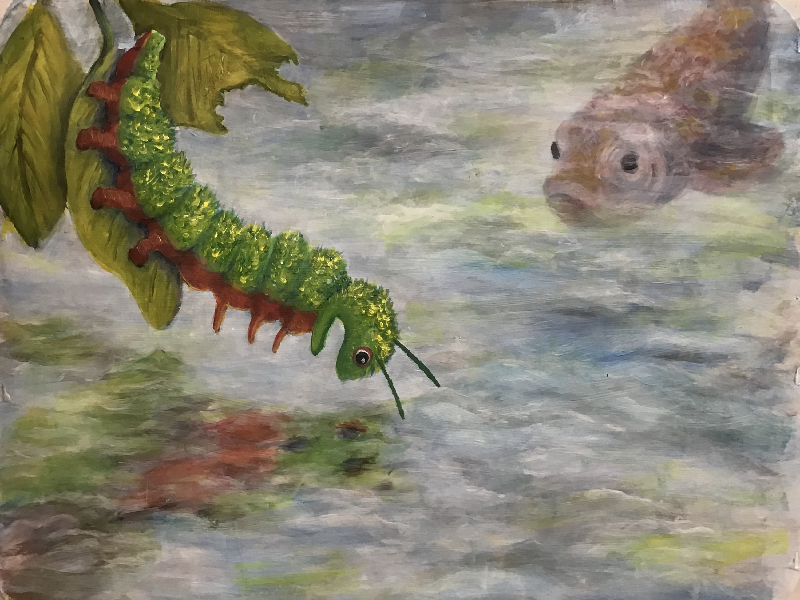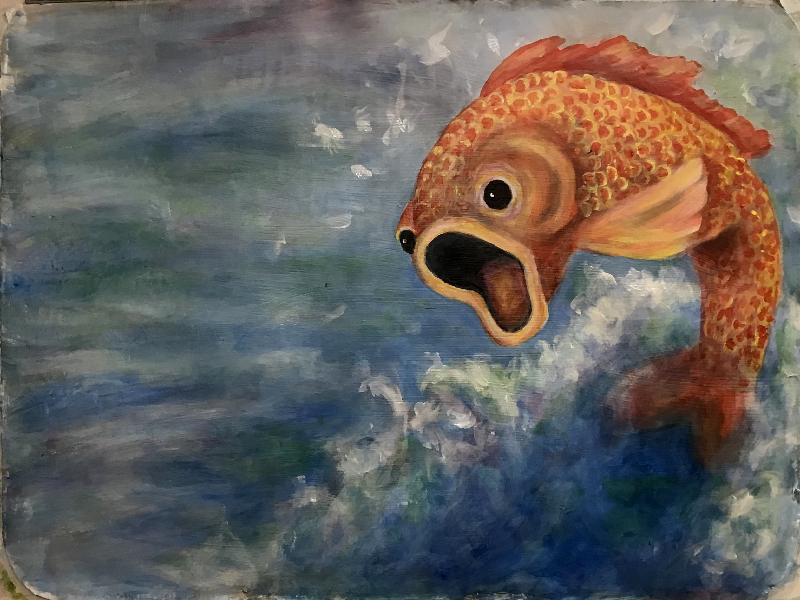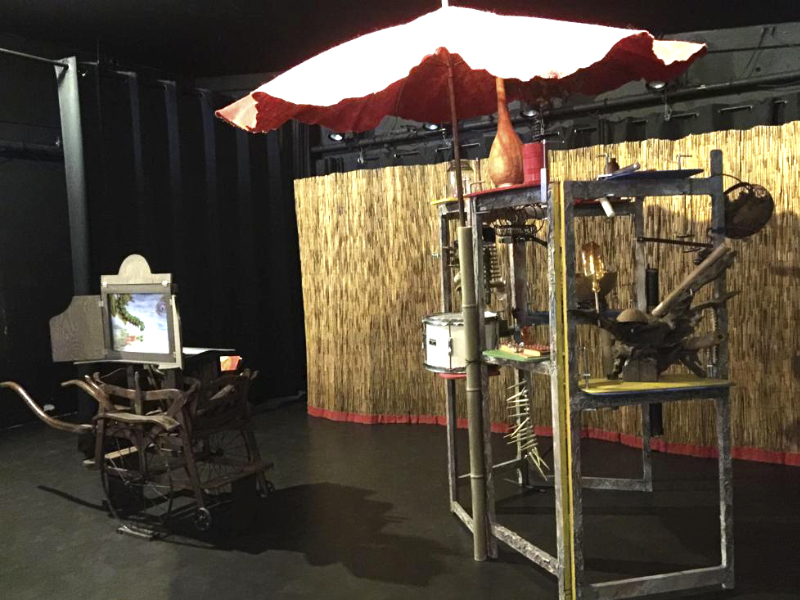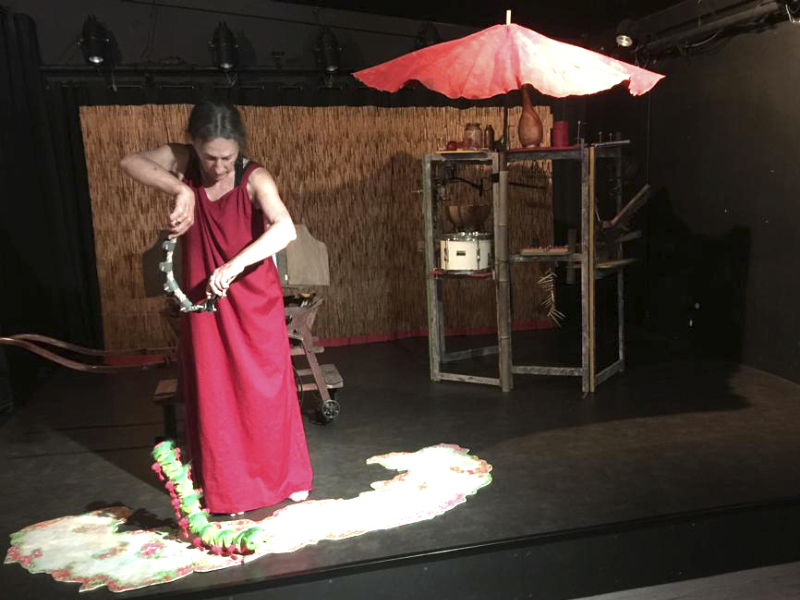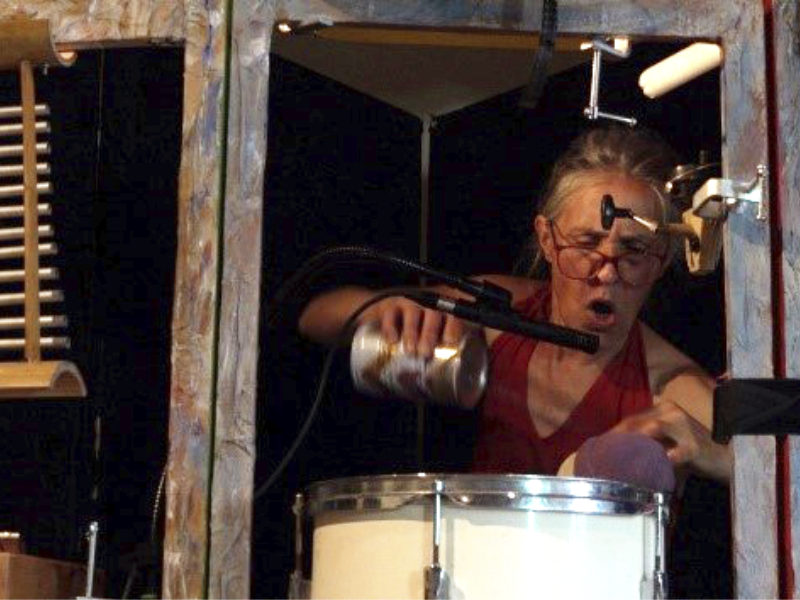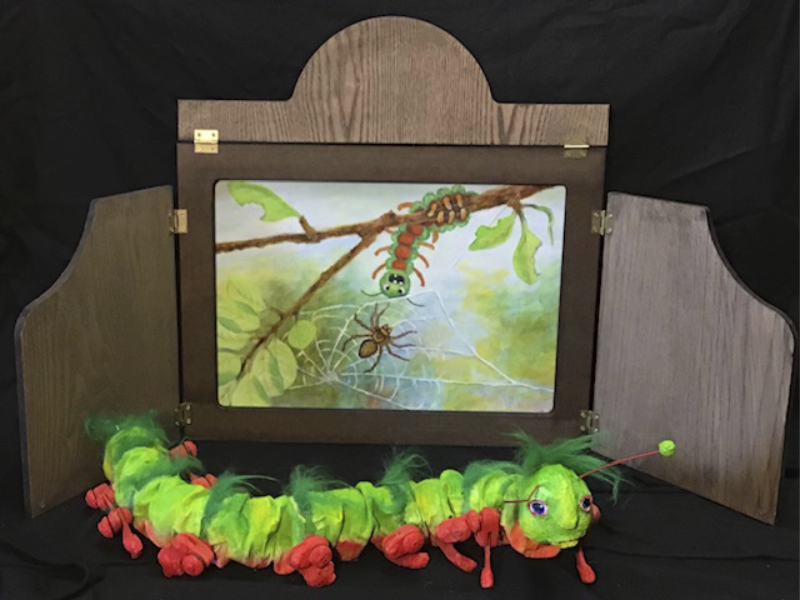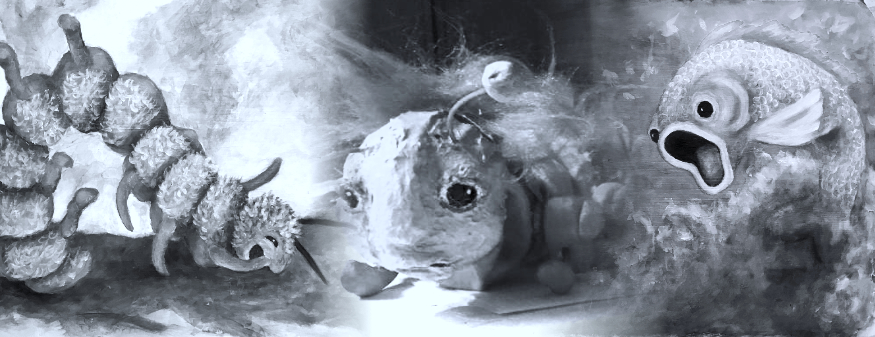
Small format
Kamishibai storytelling performance, puppets, music and singing
Interactive
For children from 2 to 5 years old
Presentation
The discovery of this concept of the Japanese technique for picture theatre story-telling, called kamishibaï1, completely enchanted us. During the shutdowns, in 21 hand-painted images, the story OH! about a playful caterpillar was born, inspired, no less, by a scene from another of our shows for young audiences “Carried in the wind”.
The show is the result of a second collaboration between two artists from two puppet companies. Soraya Daigre, Company Contrepoint (Sainte Croix Volvestre 09), creates sound effects, music and song; Mary Sharp, Company Full Circle (Verniolle 09), who created the story and the pictures, tells the story while manipulating the painted cards. They both interact and sing with the children during the performance.
One day Caterpillar discovers that she can make great faces, and what’s more, her faces scare everyone she meets. Which makes her laugh herself to tears! Until the day she tries to startle the daughter of humans, little Melody. This time, it’s Melody who bursts out laughing…
This show is adaptable both for the stage or indoor spaces and for outside. Originally, the butaï2 for the Kamishibaï was installed on a bicycle; ours is on an old wooden twin stroller.
When we play outside, a caterpillar, a dancing string puppet, attracts the attention of passers-by. When we play inside, the caterpillar welcomes the audience. This puppet is inspired from the “Jig doll” folklore object of English-speaking countries, where it is a small puppet with loose limbs that dances or “jumps” at the end of a vibrating board. Except that ours is on strings. And she has 14 legs… when she dances to the steady rhythm of accordion music, her dancing resonates like a percussion instrument.
1 The kamishibaï or “theatre of images” literally means: “theatrical paper performance”. It is a storytelling technique of Japanese origin based on scrolling images in a small wooden or cardboard theater, with three or two doors, called
2butai (literally “scene”). The cardboard sheets, illustrations of the kamishibai, tell a story, each image presenting an episode of the tale.
Download:
(English versions can be provided upon request. Please note that this show can be performed in English as well as in French)

